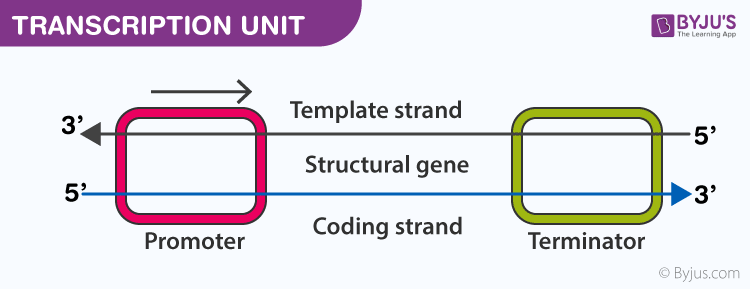The discovery of DNA was one of the most significant findings in the field of science. Today, deeper insight into the DNA structure has unravelled answers to questions that have been around for eons.
The Central dogma explains how the DNA codes for the proteins which proceed in three stages, namely, replication, transcription and translation. Once DNA replicates its two strands, the information is copied into RNA by the process called transcription. Let’s learn more about the process of transcription.
Table of Contents
Transcription Definition
“Transcription is the first step of gene expression that involves the formation of RNA molecucle from DNA.”
What is Transcription?
It is one of the first processes in gene expression. The genetic information flows from DNA to protein and this flow of information takes place in a sequential process of transcription and translation. Only one strand of DNA is copied during the process of transcription known as the template strand and the RNA synthesised is called the mRNA.
The main motive of transcription is RNA synthesis from the DNA sequence. The RNA transcript carries the information used to encode a protein.
Also Read: RNA structure
RNA Polymerase
The RNA polymerase is the main enzyme involved in transcription. It uses single-strand DNA to synthesize a complementary RNA strand. The DNA-dependent RNA polymerase binds to the promoter and catalyses the polymerization in the 5’ to 3’ direction on the template strand. Once it reaches the terminator sequence, the process terminates and the newly synthesised RNA strand is released.
Transcription Unit is a stretch of a DNA transcribed into an RNA molecule. Its function is to encode at least one gene. Suppose if gene encodes protein than mRNA is produced by transcription. A protein encoded by the DNA transcription unit may comprise a coding sequence. Compared to DNA replication, transcription has a lower copying fidelity.

Also Read: Central Dogma
Stages of Transcription
Transcription proceeds in enzymatically catalysed steps i.e.
- Initiation
- Elongation
- Termination
Initiation
RNA polymerase attaches to the DNA molecule and moves along the DNA strand until it recognises a promoter sequence. These are known as the transcription start sites. The DNA double helix then unwinds and all the bases on each of the DNA strands are exposed. This acts as a template for a new mRNA strand.
Elongation
Ribonucleotides are added to the template strand that enables the growth of mRNA growth.
Termination
RNA polymerase encounters a terminator sequence and the transcription stops. RNA polymerase then releases the DNA template.
RNA Processing
The transcribed RNA is known as the pre-mRNA. It is processed further to convert it into mature RNA. RNA processing include:
- Capping
- Polyadenylation
- Splicing
Capping
A methylated guanine cap is added to protect the mRNA. It involves:
- Addition of methylated guanine
- It occurs at 5′ end of mRNA transcript
- It protects the mRNA from degradation
Polyadenylation
The poly-A tail also protects the mRNA from degradation. It involves:
- The endonucleases cleave the mRNA at a specific sequence.
- The enzyme polyA polymerase facilitates the addition of several adenine nucleotides.
Splicing
- The non-coding sequences, i.e., the introns are removed by spliceosome excision.
- The coding sequences or the exons join together by ligation.
Thus several proteins can be made from a single pre-mRNA. A mature mRNA is obtained at the end of transcription.
Also Read: Protein synthesis
This was all about the transcription of DNA to RNA. For more details on the transcription and its stages, keep visiting BYJU’S website or download BYJU’S app for further reference.
Frequently Asked Questions
What is the process of transcription?
Transcription is the process in which a DNA sequence is transcribed into an RNA molecule with the help of enzyme RNA polymerase. One of the DNA strands acts as a template to make a complementary RNA strand.
Where the transcription start and terminate?
The transcription starts at the 5′-end of the DNA sequence.
Are enhancers necessary for transcription?
Enhancers are regions in eukaryotic cells that help to increase the transcription. These are not necessarily close to the genes they enhance.
What is the end product of transcription?
An RNA transcript is obtained as an end product of transcription. It can form any type of RNA such as rRNA, mRNA, non-coding RNA and tRNA. The prokaryotes form a polycistronic mRNA whereas eukaryotes form a monocistronic mRNA.
What are the promoter sequences?
Promoter sequences are the gene sequences where the DNA transcription begins. These are located upstream at the 5′ end of the DNA sequence.

Thanks sir
Hey there, I adore your website! I tend to agree with your point as I am a scriber for a BPO provider.